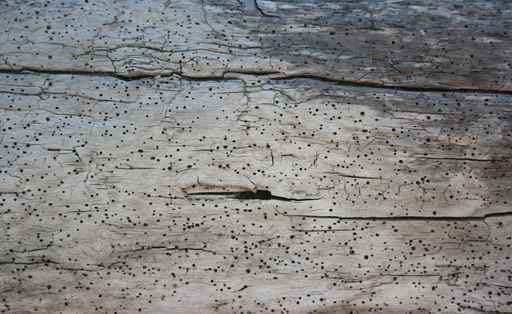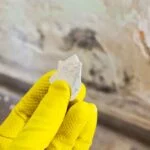What are Woodworms?
Woodworm is the term applied to the infestation of a wooden item with the wood boring larvae from a range of species of beetle. There are many species of beetle known to be the cause of woodworm infestations worldwide, however the most commonly seen variety in Scotland is the Common Furniture Beetle. Other species of beetle, such as the Death Watch beetle, House Longhorn Beetle and Powderpost Beetle tend to thrive in warmer environments further south and are rarely seen in Scotland.
The Common Furniture Beetle lays its eggs into small cracks or holes in wood. Once they hatch into larvae, they bore into the wood itself, eating away at the starchy grain under the surface. They live under the surface until they are ready to pupate, usually for 3-4 years, before moving closer to the surface, eventually boring through the wood and emerging as adult beetles. The resulting 1-2mm holes (these are often compared to the size of holes in a dartboard) in the wood and also dust spillage (known as frass) is often how woodworm infestation is first spotted.
Common Furniture Beetles target mostly softwood timbers commonly found in floorboards, loft timbers and old unfinished furniture. They thrive in areas that are damp, as this beetle is generally seen in the wild in moist deadwood. Therefore, if the timber in a dwelling is damp, the risk of a woodworm infestation is far greater than in a well ventilated damp free setting.
Prevention is always better than cure, and this can be done by ensuring that the property is kept well ventilated and by reducing humidity. Woodworm can only thrive in dampness, preferring moisture content within the timber over 18% and able to tolerate it down to levels around 12% for a short period of time. A woodworm treatment professional might use a timber moisture meter to gain a reading of the moisture level within the wood and give an indication of whether or not an infestation is likely to be present.
If you suspect areas of your property may be subject to a woodworm infestation, the first step is to contact a professional in this field who will be able to diagnose if it is indeed a live woodworm infestation and determine which timbers need to be treated and/or replaced. If the structural damage is deemed significant enough to require replacement timber, this will usually be done with pre-treated timber to reduce the risk of a repeat infestation. Currently unaffected timbers will usually also be surface treated with pesticides.
Treatment of woodworm may seem pointless, as all larvae under the surface will eventually emerge through the wood, however the treatments used by woodworm specialists result in the adult beetles becoming unable to breed further, significantly reducing their population. As adult female beetles like to lay eggs in the previously excavated holes in the wood, this sterility in the emerging beetles massively reduces the chances of a repeat infestation in the same timber.
Overall, if your property is displaying signs that might indicate a woodworm infestation, it is always best to contact a professional in this field to investigate further. It is dangerous to attempt chemical woodworm treatments yourself.
Think you may have woodworm in your property? Contact Keith Rennie today!








